Brown pigmentation on the legs develops for various reasons stemming from external and internal factors. Understanding the causes of brown pigmentation on your legs is more than just a matter of cosmetic concern. It’s crucial to preventing potential complications affecting your overall health and well-being. Embark on a journey to safeguard your legs with personalised vascular solutions to address brown skin pigmentation.
What Are the Causes of Brown Pigmentation On The Legs
Brown pigmentation refers to darker patches or spots on the skin due to various reasons, including:
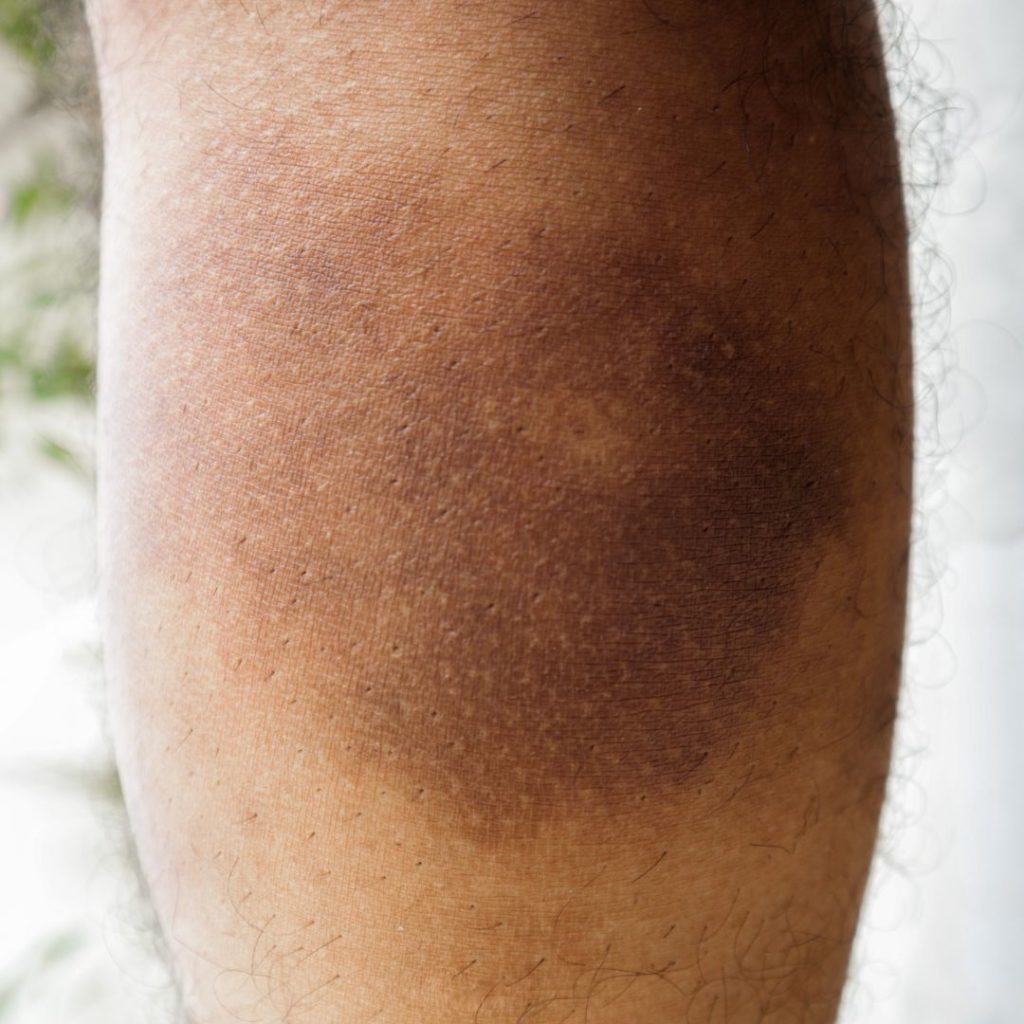
Hyperpigmentation is due to the overproduction of excess melanin from sun exposure.
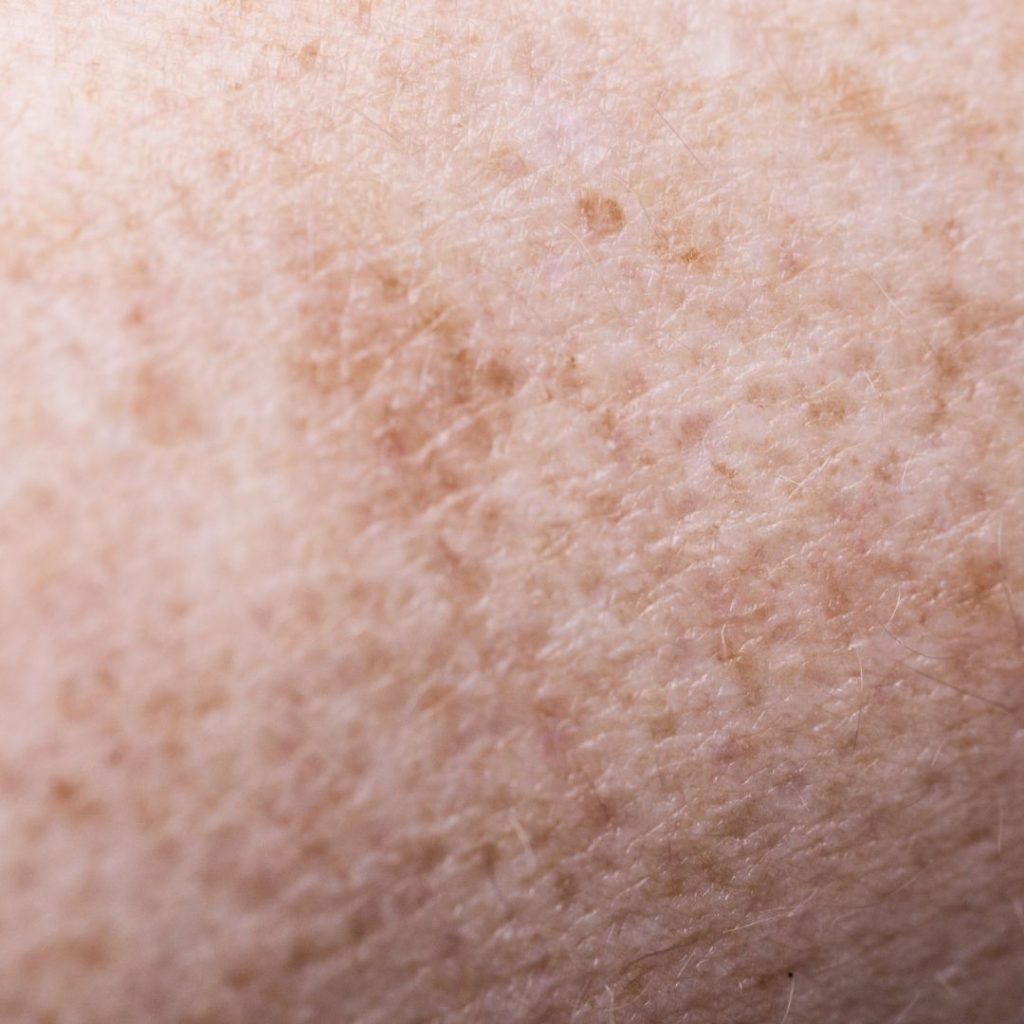
Melasma is a brown or grey-brown broad patch on the face but can also occur on the legs due to hormonal changes.
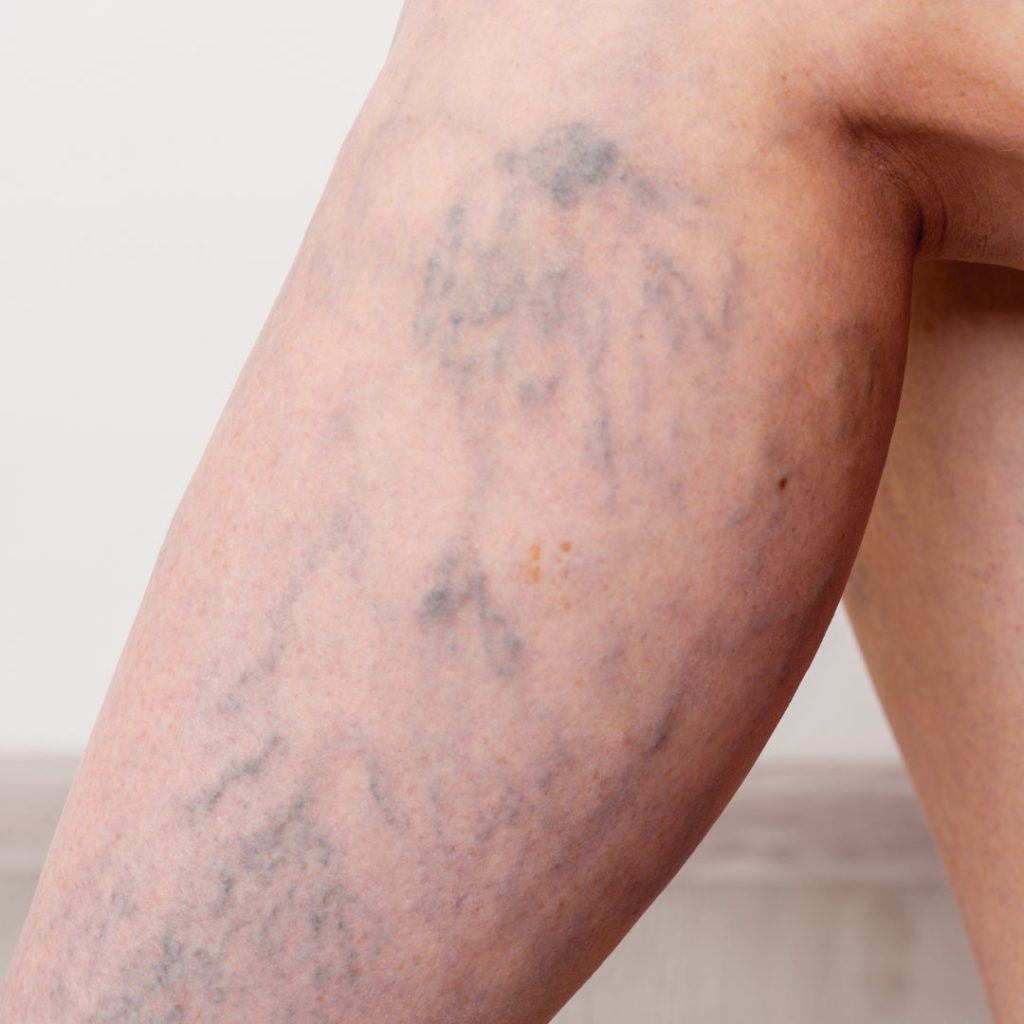
Varicose veins appearing as dark blue or purple bulging veins on the legs cause brown pigmentation around the affected area due to blood pooling.
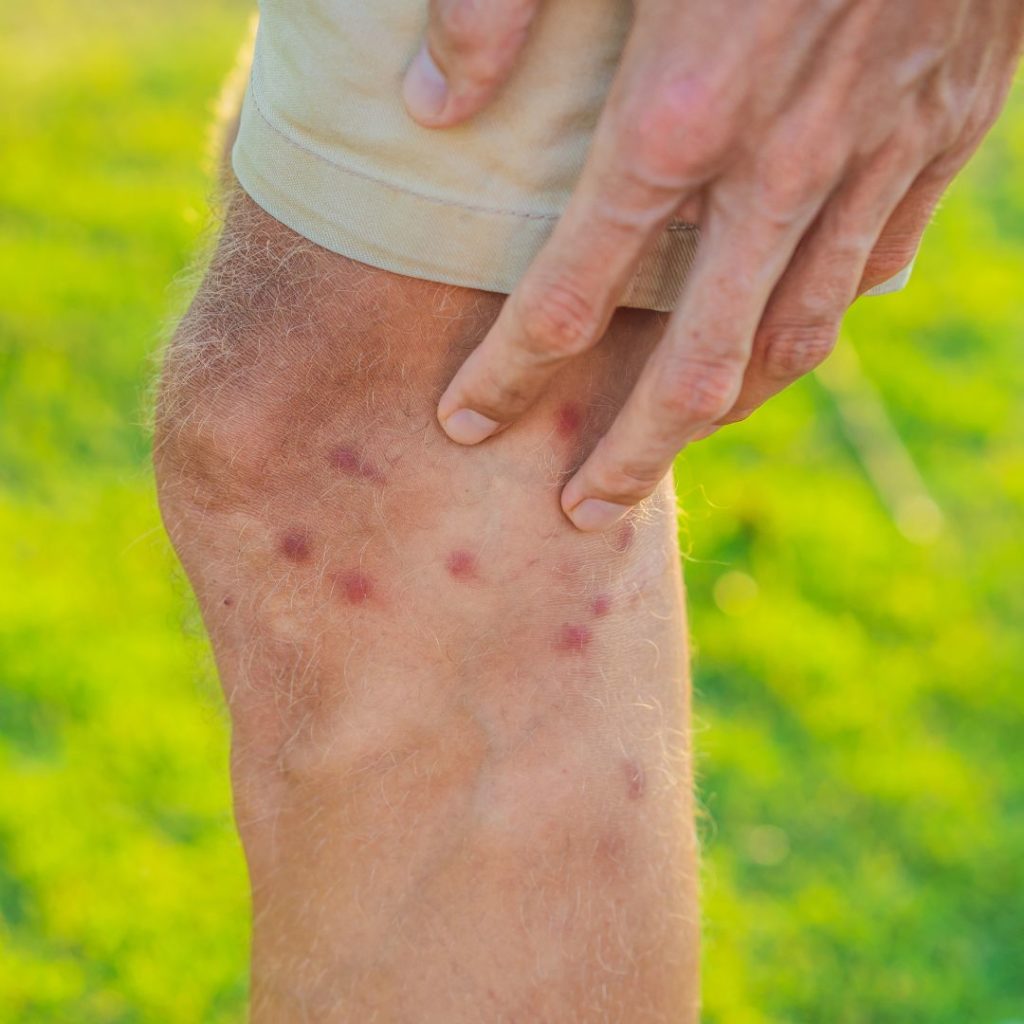
Post-inflammatory hyperpigmentation occurs after an injury, inflammation, or skin condition like eczema or acne.
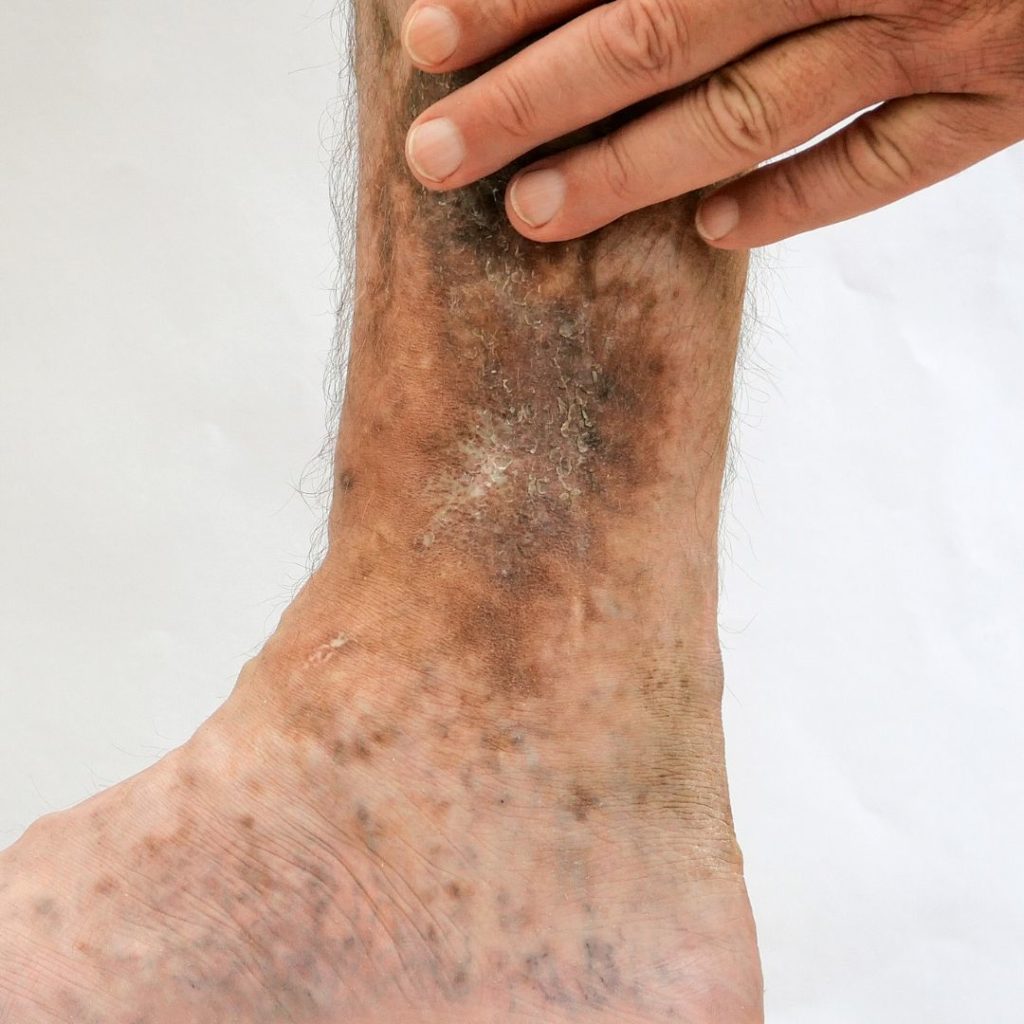
Skin disorders like lipodermatosclerosis, dermatitis herpetiformis, acanthosis nigricans, or lichen planus may cause brown pigmentation on the legs as a symptom.
Varicose Veins and Lipodermatosclerosis: What Are Symptoms Associated With These Conditions?
Skin pigmentation, varicose veins, and lipodermatosclerosis are separate conditions that may occur together or share some common causes.
Varicose veins occur due to damaged or weakened valves, leading to poor blood circulation and blood pooling. This condition can cause symptoms like
- Pain
- Swelling
- Aching
- Skin changes, e.g. brown pigmentation on the legs, itchiness, or thickening.
In some cases, varicose veins contribute to skin pigmentation changes. The affected veins can cause inflammation and damage surrounding tissues, increasing melanin production and subsequent brown pigmentation. This condition impairs the delivery of oxygen and nutrients to the skin, further contributing to discolouration.
Lipodermatosclerosis results from chronic venous hypertension (high blood pressure within the veins), inflammation, and changes in the fat tissue under the skin. The exact cause is not fully understood but may be related to the heightened pressure and fluid accumulation in the veins, leading to tissue damage and fibrosis.
It affects the area above the ankles and extends upward towards the calves. The following symptoms characterise this condition.
- Red, inflamed, and hardened skin
- Pain, swelling and tenderness
- Leg ulcers
- Late-stage: skin may become brown, leathery, and shiny
When Should I Be Worried About Brown Pigmentation on Lower Legs: 5 Signs You Need To Visit A Vascular Specialist
Recognising the symptoms that prompt worry is crucial in ensuring your health and well-being. If you’ve noticed any of the following signs accompanying the brown pigmentation on your lower legs, consider scheduling an appointment with a vascular specialist:
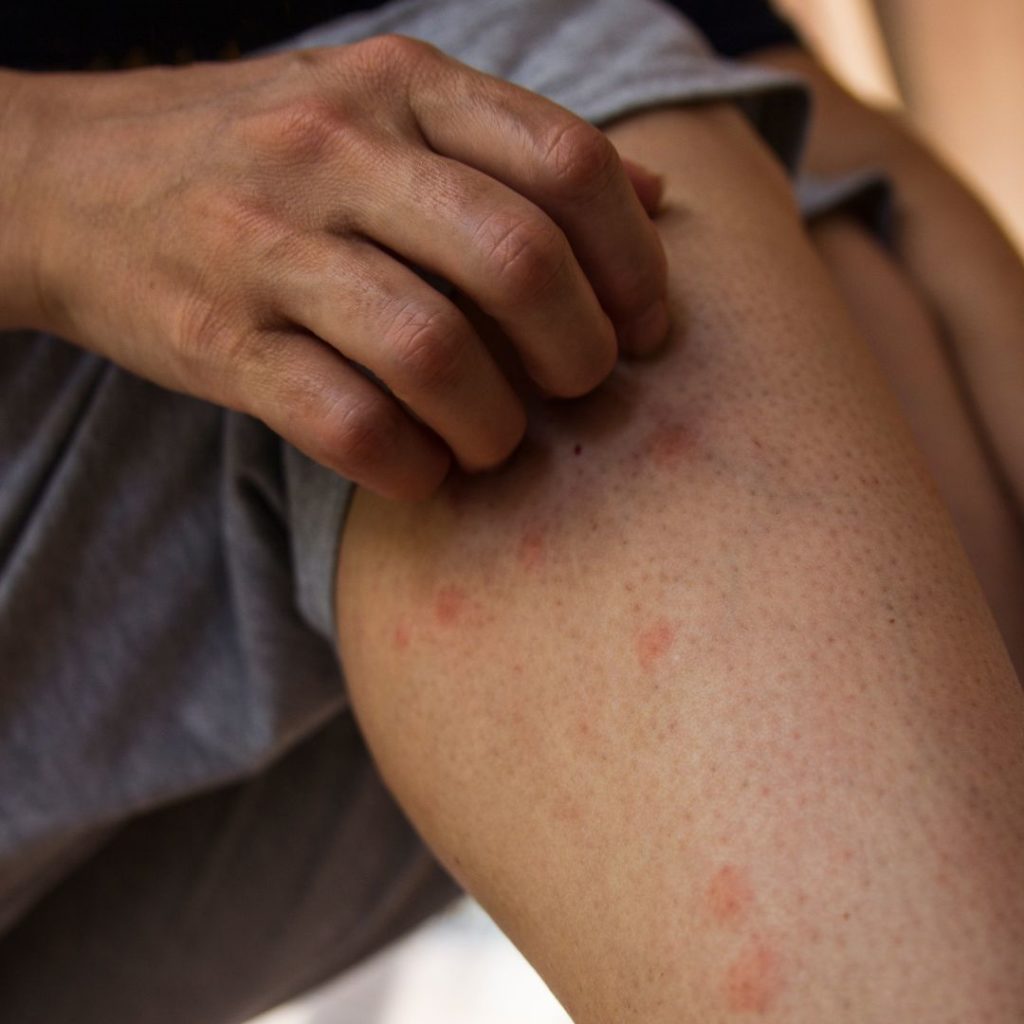
Persistent Itching may indicate an underlying problem when the pigmented area doesn’t respond to over-the-counter creams or remedies.
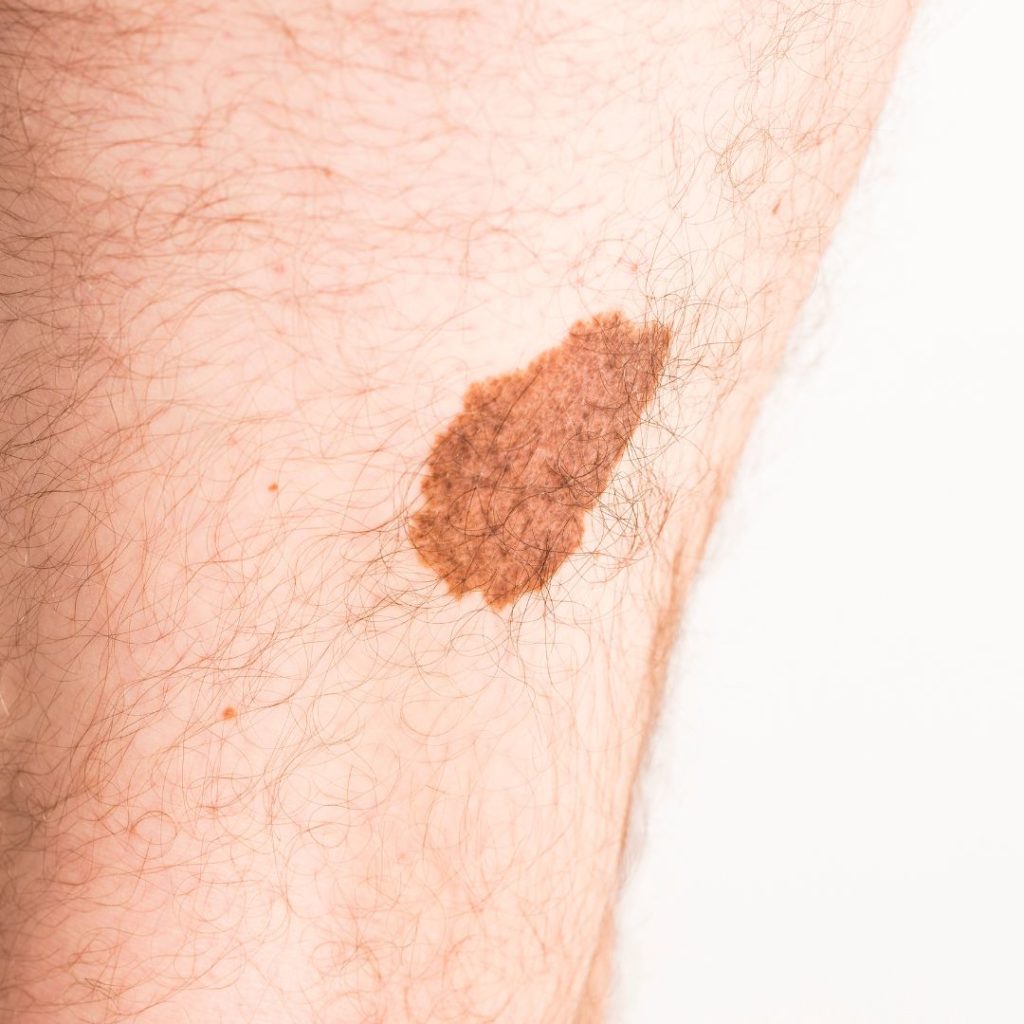
The sudden increase in the pigmented area’s size or changes in its shape, especially if it becomes irregular or asymmetric.
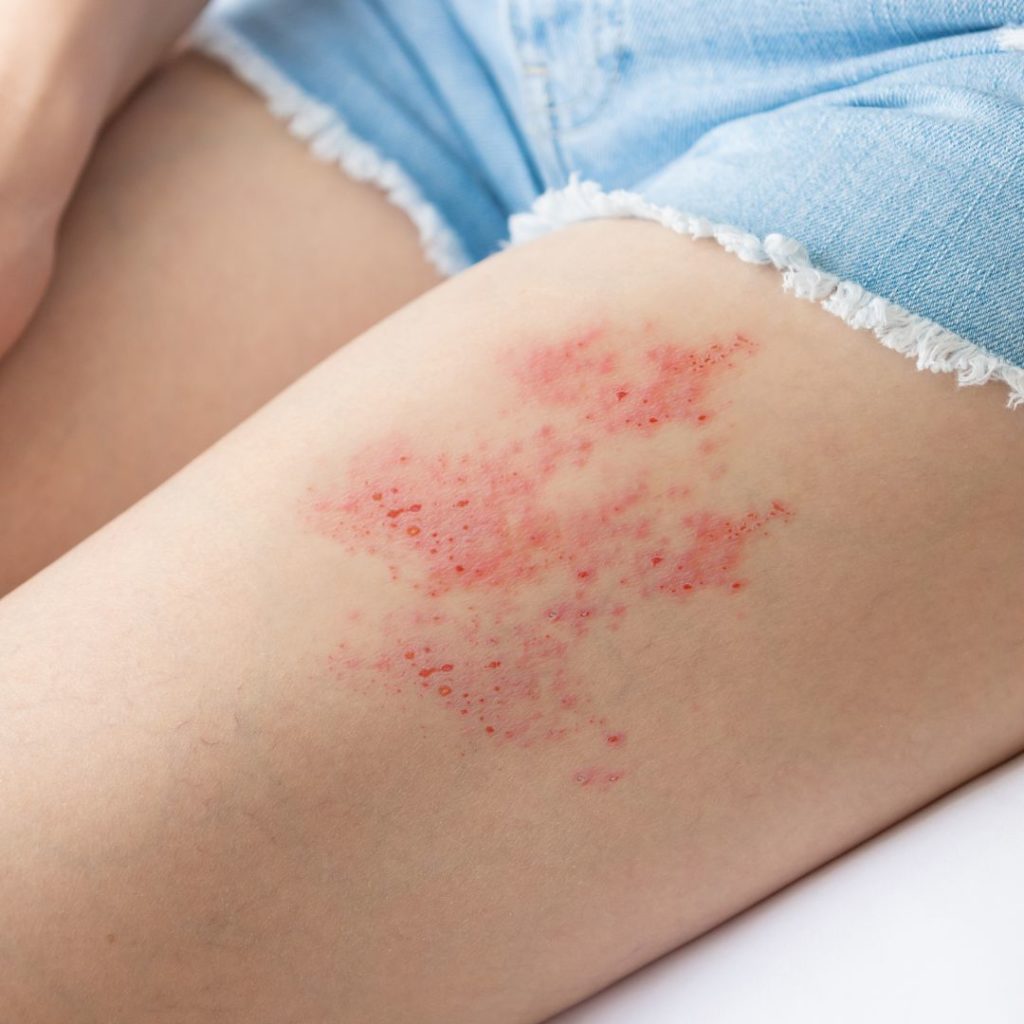
Bleeding or ulceration of the brown pigmentation on the legs.
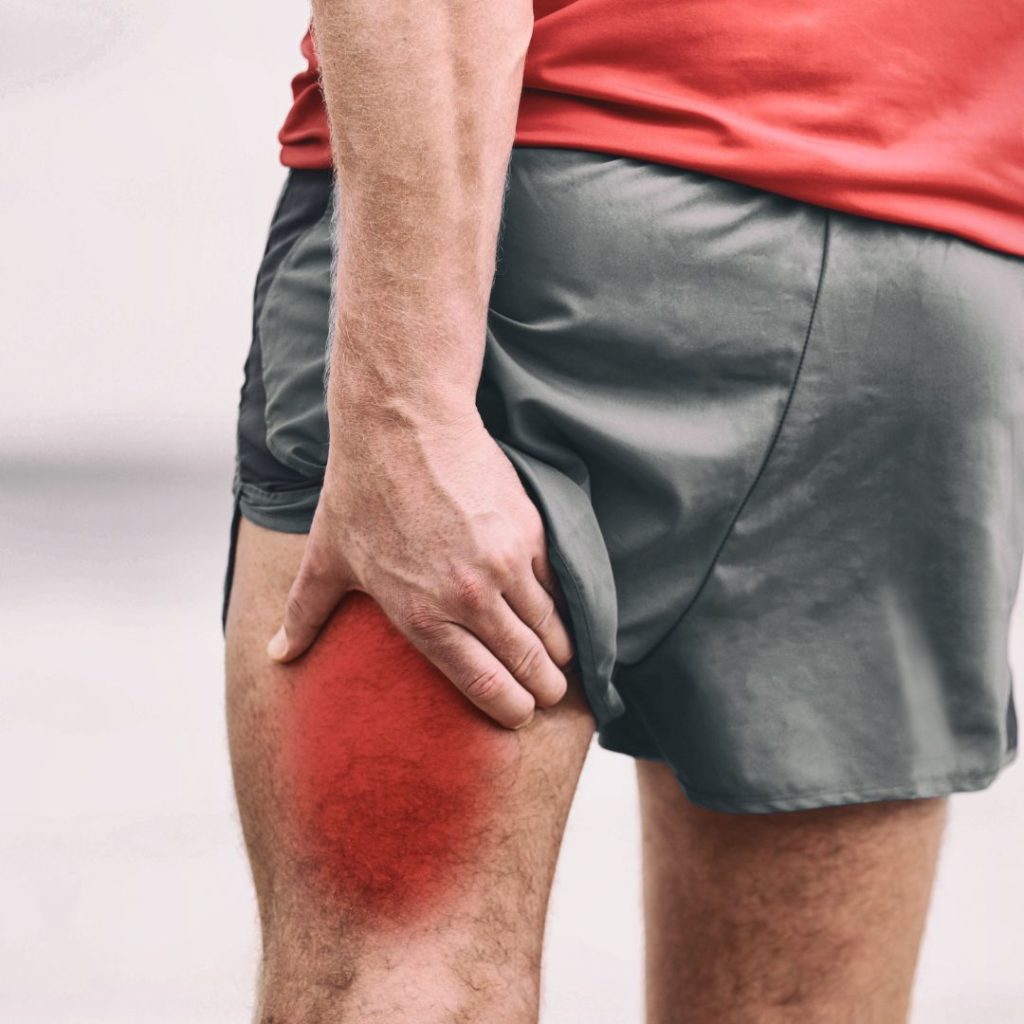
Experiencing pain or discomfort in the pigmented area, especially when it becomes chronic or worsens.
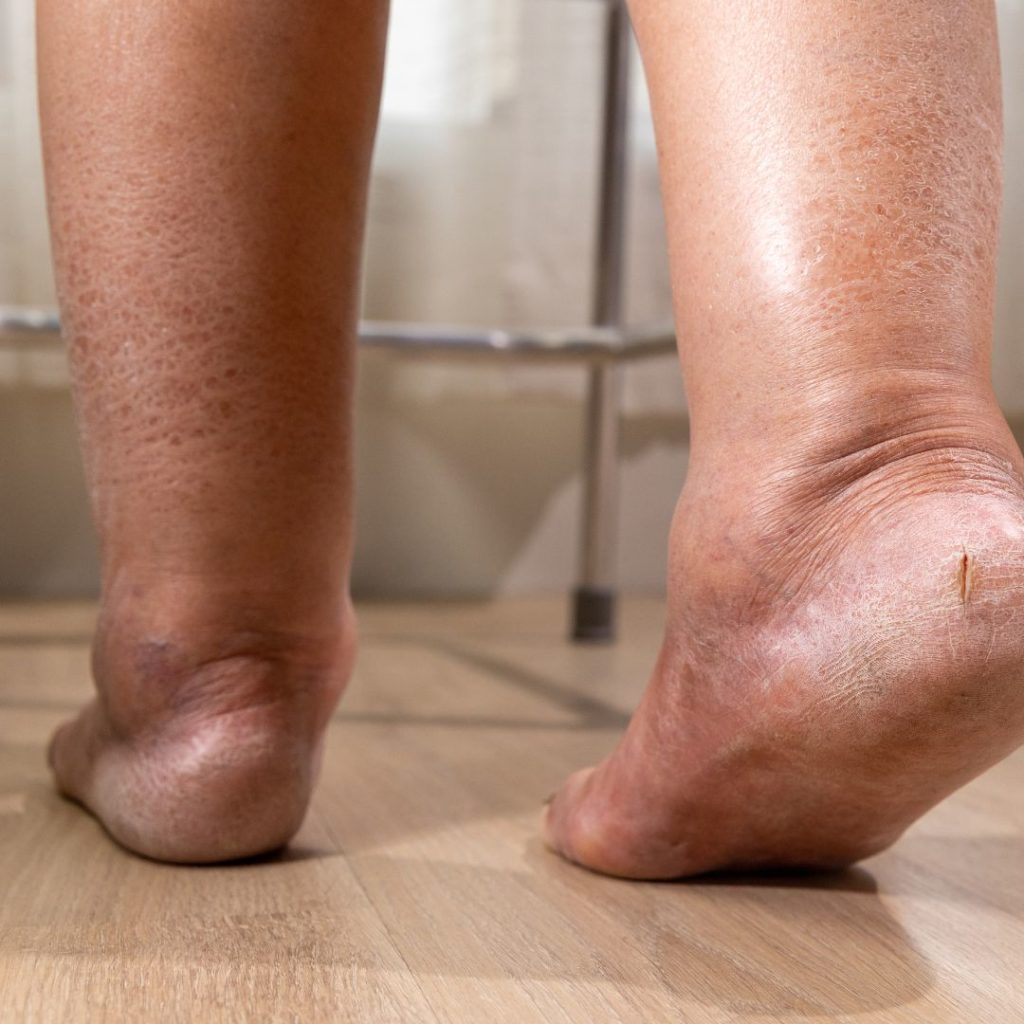
Swelling, puffiness, or oedema around the pigmented area might indicate underlying vascular or circulatory issues.
Timely intervention alleviates discomfort and prevents severe complications affecting your overall health and mobility. Our senior vascular specialists are equipped to diagnose the underlying causes and provide personalised treatments, ensuring that your well-being remains a priority.
How to Treat Brown Skin Pigmentation
Treatment options for brown skin pigmentation target the underlying condition for lasting relief. Regular consultations with a vascular specialist are vital in managing symptoms early, preventing complications, and restoring the health and appearance of your legs.
For instance, treatment for lipodermatosclerosis involves managing the underlying chronic venous insufficiency. This includes the following lifestyle modifications to improve blood flow in the legs.
- Regular exercise
- Elevation of the legs
- Wearing compression stockings
Lipodermatosclerosis is an irreversible condition that is a precursor to a venous ulcer or breakdown in the skin around the ankles. In more severe cases, medical procedures, such as endovenous ablation or surgical interventions, may be necessary to address the venous insufficiency. Lastly, wound care techniques such as cleaning and dressing the ulcers may promote healing.
Immediate treatment of the underlying chronic venous insufficiency prevents skin deterioration. Seek medical attention if you suspect you have lipodermatosclerosis, venous ulcers, and varicose veins.
Safeguard Your Skin and Legs: Personalised Vascular Solutions for Brown Skin Pigmentation
Treating brown pigmentation on the lower legs requires identifying and addressing the factors that trigger melanin overproduction. When caused by conditions such as varicose veins, lipodermatosclerosis, or post-inflammatory hyperpigmentation, consider consulting a vascular specialist for a precise diagnosis and personalised treatment plan tailored to your unique needs.
Our senior vascular specialist provides various personalised solutions, such as sclerotherapy to address varicose veins, compression therapy to manage lipodermatosclerosis, and prescription creams for post-inflammatory hyperpigmentation. These treatments target the underlying condition and improve the cosmetic aspect, enhancing overall leg health and reducing the risk of complications.
Don’t wait until the condition becomes severe. Begin your journey to healthy legs now.









